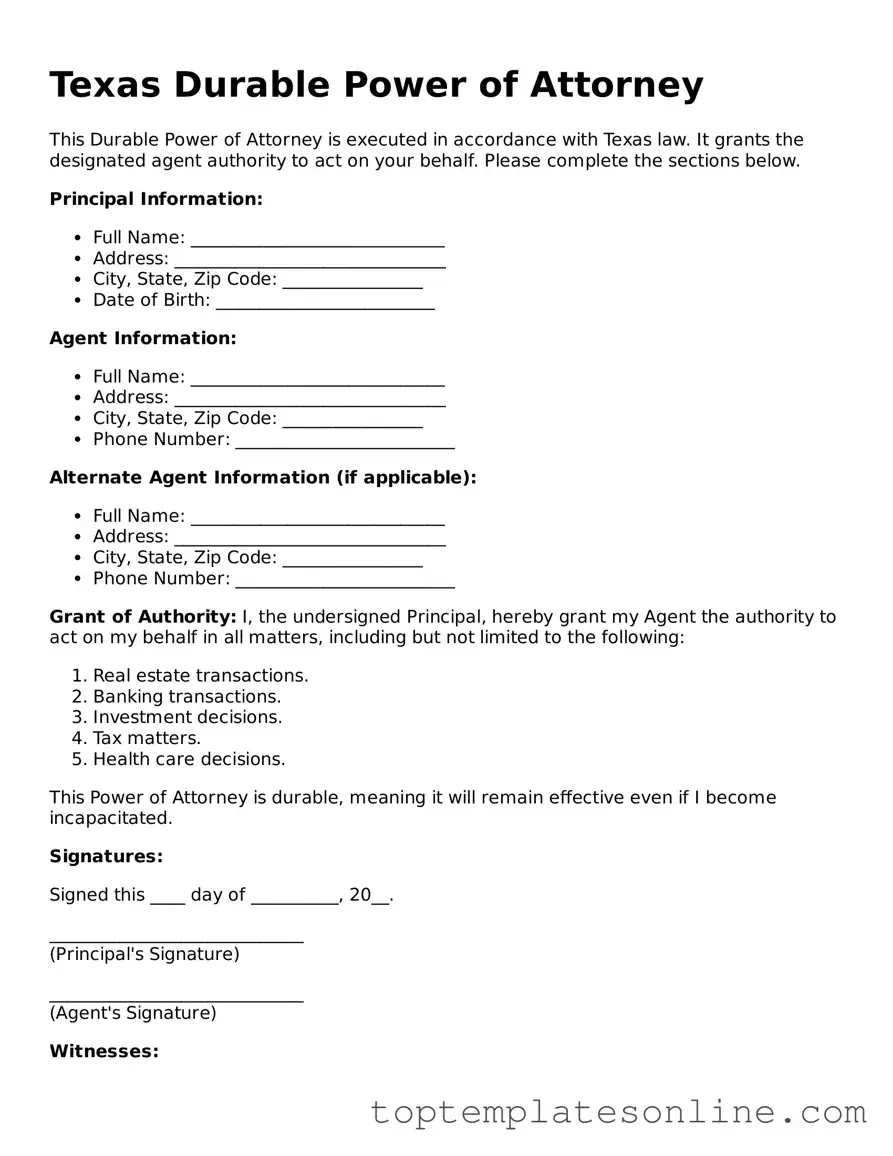The Texas Durable Power of Attorney form is an essential legal document that allows individuals to appoint someone they trust to make financial and legal decisions on their behalf, especially in situations where they may become incapacitated. This form remains effective even if the person who created it loses the ability to make decisions, providing peace of mind for both the principal and the agent. By clearly outlining the powers granted, the form can cover a range of financial matters, from managing bank accounts to handling real estate transactions. It is important for individuals to understand the responsibilities and limitations of the appointed agent, as well as the specific powers they wish to grant. Additionally, the Texas Durable Power of Attorney can be tailored to fit individual needs, allowing for flexibility in how authority is assigned. Properly executing this document involves specific requirements, including signatures and witnesses, ensuring that it complies with Texas law. Understanding these key aspects can help individuals make informed decisions about their future and ensure that their wishes are honored when they cannot advocate for themselves.
